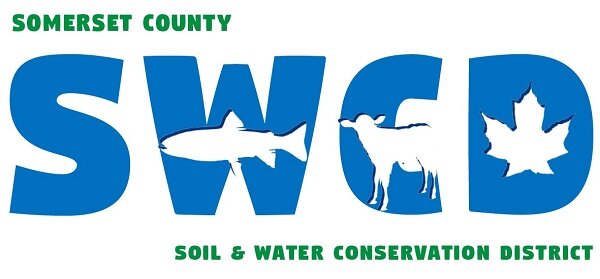Chance Encounter
If you spend any time in the woods, you likely have heard a Black-throated Green Warbler. Found statewide during breeding season, its call is one of the easier to recognize. It is described as a buzzy zee-zee-zee-zoo-zee (Have a listen here).
Although its song is not uncommon at the Yankee Woodlot demonstration forest, the Black-throated Green Warbler is not easily spotted. They feed and sing in the forest canopy, making it a challenge to catch sight of them despite their flashy color. They nest, however, in conifers 3-10’ off the ground.
On a recent walk on the inner loop trail, I caught a flash of yellow out of the corner of my eye, movement in a thick patch of young fir close to the trail. I stopped in my tracks and waited, and it didn’t take long to spy the brilliant yellow head of a warbler flitting about in the understory. I had the wrong lens for the job but hastily took a few photos before a blue jay sounded the alarm and the beautiful mystery bird headed for the canopy.
A black-throated Green Warbler gleans insects in the understory at Yankee Woodlot demonstration forest. jbrockway photo
What a surprise to find a Black-throated Green when processing photos that evening! The bright yellow face, a wedge of olive on the back, black throat and distinct wing bars make identification fairly easy. (Not a birder, I had our Technical Director Laura Suomi-Lecker confirm the ID.)
Black-throated Green Warblers - referred to as BTG by more than one birding site - are on the Priority Species list for Forestry for Maine Birds (FFMB). This newer approach to managing woodlands incorporates bird conservation with forest management and planning. While many forest bird species are at risk and in decline, FFMB suggests that if we manage forests across the Maine landscape to maintain a mix of structures and features for the 20 species on its Priority list, then we will provide habitat for many other species of birds and wildlife as well. (Gallo et al 2017)
For our BTG, FFMB guidance suggests maintaining 1) some older forest with large, tall trees and dense vegetation in the canopy and understory; 2) multiple layers of vegetation (overstory (>30’), midstory (6-30'‘), and understory (<6’)); and softwood patches in hardwood stands. Remember where I found my BTG? In the understory within a patch of fir surrounded by mixed hardwoods.
A collaborative effort of Maine Audubon, the Forest Stewards Guild, Maine Forest Service and Maine Dept. of Inland Fisheries & Wildlife, FFMB provides information and training tailored for family landowners, loggers and foresters. FFMB workshops at the Yankee Woodlot are one of our more popular programs each year. This year’s workshop was cancelled due to the pandemic but there is a wealth of information available at the program’s website. If you are a forest landowner interested in managing your woods to benefit birds and wildlife, I recommend starting with the Woodland Owner’s Guide.
And if you want to learn more about the BTG, visit All About Birds, a fabulous resource hosted by our Ag Allies partner, the Cornell Lab.
Black-throated Green Warbler at Yankee Woodlot demonstration forest, jbrockway photo
— Jennifer Brockway, Outreach Coordinator

